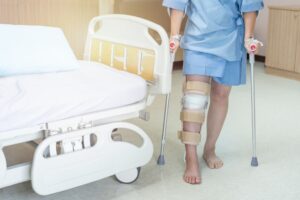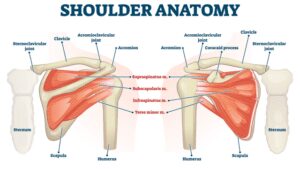Treatments before surgery
If you have ever been told by a medical provider that you are “bone on bone,” your joints show a lot of “wear and tear” or that you have “no cartilage left,” the prognosis can seem grim. It may appear that your only option to address these issues is surgery. The truth is, there are many conservative, or non-invasive options available before having to resort to surgery. After all, once you change the normal anatomy, you can’t get it back. Traumatic injuries sustained from a fall or car accident may require immediate surgery, but oftentimes moderate to low level pain that develops over a period of time can be treated and resolved without surgery altogether. Let’s explore treatment options in order from most conservative to least conservative.
Immobilization in a sling, boot, cast, or splint:
In the instance of a mild to moderate sprain, significant non-traumatic pain, or a non-complicated fracture, fixation using a cast or splint may be used to promote healing without disruption from outside forces or excessive pull from the surrounding muscles. Weakness and muscle atrophy can set in as early as two weeks after immobilization, and it can be helpful to see a physical therapist to address any deficits in strength and mobility that may arise afterwards.
Physical Therapy (PT):
Physical therapy includes an assessment of the musculoskeletal system to identify limitations in strength, joint and soft tissue mobility, motor control, balance, and other impairments that may be contributing to pain and or loss of function. Follow up treatment often includes manual hands-on treatment to reduce pain and improve mobility, as well as specific exercise prescription based on the deficits found in the assessment. Other modalities are often used, including but not limited to dry needling, taping, electric stimulation, blood flow restriction, and more. Treatment is monitored by a licensed physical therapist and exercises are progressed and modified based on progress and ongoing symptoms, until you are back to your normal self. Patients can schedule a physical therapy assessment at any time in Maryland since we are an open access state. This means that you don’t need a referral from another provider to be seen! If you have seen your primary care physician, and orthopedic surgeon, or another provider, it is possible that they may also refer to for PT.
Medications:
There are medications that can help reduce the pain in order to address the impairments like pain caused by your joint issues.
Injection:
Trigger point injection, facet joint injections, prolotherapy, PRP, and stem cell injections are all techniques that exist that can be utilized to reduce pain and/or promote the body’s natural healing response to shorten the intensity and/or frequency of pain and improve tissue repair. Injections can be used as an adjunct to therapy, to reduce pain faster and improve tolerance and ability to progress in PT.
Holistic Therapies:
Other treatment options can be acupuncture, therapeutic massage, Reiki, cognitive behavioral therapy (CBT), meditation.
Surgery:
There are certainly instances where surgery is warranted. Unremitting pain that has not resolved with the aforementioned treatments may require surgical intervention, i.e. severe arthritis or bony deformities that have developed over time which limit function with daily activities.







